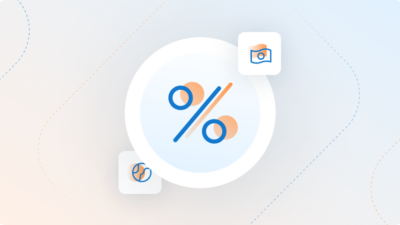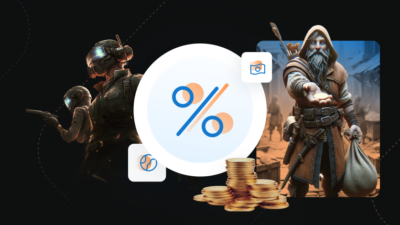Ecommerce sales tax and Value Added Tax (VAT) are intricate tax systems–especially when it comes to determining the tax rate for software and digital products. The growing popularity of digital products globally has both positives and negatives associated with them. On the one hand, the software market globally is a very lucrative and competitive landscape. The software market revenue in the United States is expected to exceed $200 billion by 2021. But on the other hand, one of the biggest challenges of selling software and digital products is navigating the intricate tax rates. So, let’s talk about how the current sales tax and Value Added Tax (VAT) work.
What is Sales Tax?
Sales tax in the United States is complex, and it gets even more complicated when you throw in crazy stuff like “digital goods and services.” Sales tax laws initially were written for determining tax rates on physical items—things that could be weighed, packaged, and delivered.
Despite the prevalence of online goods and services, we base our sales tax rates on the original statutes that apply to tax rates on tangible products.
Now, let’s take it one step further. Here are ways state governments apply sales tax laws differently:
- The definitions and terms of sales tax are not universal to every state
- Sales tax on particular services varies from state to state
- State governments use a variety of different methods to determine sales tax on tangible goods sold with a service
But why collect sales tax in the first place?
Sales tax provides state governments and localities an additional form of funding for expenditures like public safety, healthcare, and education. Ecommerce sales tax falls under the category of consumption taxes, meaning it’s only charged when a buyer purchases goods or services. The seller or online merchant is responsible for collecting the sales tax on all applicable transactions from consumers and then remitting it to the state government.
U.S. Sales Tax Exemptions
If you think your digital business is exempt from collecting and remitting sales tax, think again. The recent Wayfair vs. South Dakota ruling has removed physical presence as a requirement for sales tax responsibility and they replaced it with “significant economic nexus”. In most cases, the parameters for this term have not been defined, so sellers and buyers are tasked with clarifying how sales tax rates apply to particular business uses, and which areas are exempt.
Areas that have not had to worry about sales tax collection or remittance before, such as online marketplaces, cloud computing, and digital products now need to be paying close attention to whether or not their customers have tax exemptions based on their location.
Even with Streamlined Sales Tax (SST), a voluntary organization of 22 states seeking to create uniformity among state governments about sales tax and compliance obligations, over half the U.S. states aren’t included. Meaning there is a ton of ambiguity still surrounding sales tax. With the dynamic nature of sales tax in the U.S., partnering with a full-service ecommerce platform like FastSpring could save you the headache of deciphering it yourself.
What are Digital Products?
U.S. sales tax becomes so complex that state governments don’t even have the same definitions for “digital products.” The SST has come up with some ways to categorize digital products, but again this only applies to 22 states.
The SST has three main categories of “specified digital products:”
- Digital video files – television shows or movies
- Digital audio files – music and podcasts
- Digital books – books delivered without physical media
As you probably noticed, there are many digital products not represented in the SST definition. So, digital goods like data processing, computer software, and other online (cloud) services still live in an undefined area of U.S. state sales tax law.
Some organizations are exempt from paying sales tax. For example, a company that manufactures products may not have to pay sales tax on the raw materials used to create the products. Similarly, retail businesses generally do not pay sales tax on wholesale goods that are resold. This is because consumers are obligated to pay sales taxes when they purchase the resulting goods.
These organizations have completed the extensive process to obtain federal tax-exempt status from the IRS which means they are not required to pay state or local sales taxes on the items they purchase. Tax-exempt organizations include:
- Charities
- Educational Organizations
- Scientific Organizations
- Literary Organizations
- Religious Organizations
Regardless of varying definitions, your online business still needs to be sales tax compliant. So, understanding how tax rates affect software and digital goods is vital.
What is VAT?
A value-added tax (VAT) is a consumption tax placed on a product whenever there is a value-added to each stage of the supply chain, from production to the point of sale. The amount of value-added tax (VAT) that the consumer pays is on the cost of the product, less any costs of materials used in the product that was already taxed.
If you sell your digital goods outside of the U.S., you are responsible for “value-added tax” (VAT). Primarily, anytime a consumer outside of the U.S. (specifically the EU) purchases your digital product; your business holds onto a portion of the sale to later pays the consumption tax to the government.
There are several steps you can take to be compliant with the value-added tax (VAT) like identifying the physical location of your consumers to determine the appropriate tax rate to apply, keeping detailed transaction records, and reporting on value-added tax (VAT). However, this is a lot of work. This is why thousands of software company’s partner with FastSpring. As a Merchant of Record, FastSpring is responsible for managing VAT compliance so companies can focus on what they do best—selling software!
Who is VAT-exempt?
There are two main scenarios in which you could be tax-exempt:
1. If, as a value-added tax (VAT) registered business, you sell your goods or services to another value-added tax (VAT) registered company
2. If your services provide a public good or aid the public interest – E.g., Education to children or young people, vocational training or retraining, hospital or medical care or closely related activities
To recap, we have a bunch of old tax systems that we had no intention of utilizing for digital goods that now regulate the sale of digital products. We have 50 different states and countless other countries with varying rates of tax and tax laws. And we don’t have a standardized definition for “digital goods” across all players involved.
At this point, if you’re thinking, “This is too complicated. I don’t want to have to figure this out,” that’s okay. You don’t have to figure this out by yourself, because we take care of sales tax and VAT rates for you.
We at FastSpring, exist to make sure you don’t have to deal with the intricacies of local, state, and international tax rate policies. We provide end-to-end ecommerce solutions that are designed to help you sell software, content, and other apps online without the sales tax and VAT headache. You create an excellent digital product, and we make sure your transactions are compliant.









